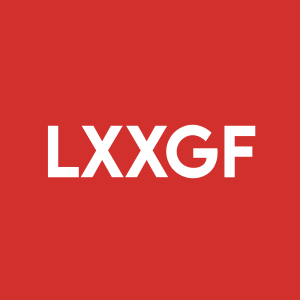LexaGene Expands Bio-Pharma Contamination Panel by Adding Test that includes a Biothreat Agent
Rhea-AI Summary
LexaGene Holdings has expanded its bio-pharmaceutical contamination panel with a new Burkholderia test for its MiQLab™ System. B. cepacia complex is a significant contaminant in nonsterile pharmaceuticals, leading to approximately 39% of contamination incidents. The FDA has recommended that drug manufacturers test for this bacterium due to its role in product recalls. The MiQLab System offers rapid PCR-based testing, which can identify contaminants within hours, significantly reducing potential losses from recalls.
Positive
- Expansion of contamination panel with Burkholderia test enhances MiQLab's market potential.
- Rapid detection capabilities can save bio-pharma companies significant costs related to recalls and downtime.
Negative
- None.
Insights
Analyzing...
BEVERLY, Mass., Nov. 09, 2021 (GLOBE NEWSWIRE) -- LexaGene Holdings, Inc., (OTCQB: LXXGF; TSX-V: LXG) (“LexaGene”), a molecular diagnostics company that has commercialized an instrument for automated multiplex PCR testing, today announced it has successfully expanded its bio-pharmaceutical (“bio-pharma”) contamination panel by developing a Burkholderia1 test for use on its MiQLab™ System.
Burkholderia cepacia complex, a group of about 24 related environmental bacteria, is a problem contaminant for the bio-pharma industry. B. cepacia is the most common microbial contaminant in nonsterile pharmaceutical products accounting for up to 39 percent of product contamination.2 In July 2021, the FDA3 advised drug manufacturers to test for Burkholderia, which has increasingly been found to be the cause of recalled products, including a skin gel,4 an ultrasound gel,5 and a mouthwash.6 Recently, following two deaths in the United States, an aromatherapy room spray7 was recalled due to contamination with Burkholderia pseudomallei (B. pseudomallei). This bacterium is classified by the Centers for Disease Control and Prevention (CDC) as a Tier 1 biothreat agent, because it can be easily aerosolized and made into a bioweapon.8 B. pseudomallei is endemic in the tropics, has a mortality rate of sometimes greater than 40 percent, and kills ~90,000 people annually worldwide.9,10
Dr. Jack Regan, LexaGene’s CEO and Founder stated, “LexaGene is increasingly bullish over the opportunities in the bio-pharma market. The more we talk to this industry, the more we recognize how much value the LexaGene MiQLab System can provide for rapid and sensitive detection of contaminants. To meet the new FDA recommendations, we have quickly developed a genus level Burkholderia test that can also detect the rare events of contamination with the biothreat agent B. pseudomallei and continue to develop other tests to provide the best, most complete, multiplexed PCR testing solution for this industry.”
Bio-pharmaceutical manufacturing companies frequently test for contamination to avoid having a recall, as these events can cost tens of millions of dollars in investigation, cleanup, corrective actions, lost revenue, and manufacturing plant downtime.11,12 The list of possible bio-pharma contaminants is long, with many requiring custom culture conditions for optimal growth. Even under optimal growth conditions, some contaminants take up to 28 days for testing.13 In contrast, PCR-based testing does not require specialized culture conditions and can be performed immediately – providing results in hours rather than weeks. The time savings that can be realized, using the MiQLab, can have massive implications for bio-pharmaceutical manufacturers by allowing them to more quickly identify contaminants before they result in millions of dollars in losses.
The bio-pharma industry is increasingly looking for flexible PCR solutions to handle complex matrices and report back results quickly. LexaGene’s MiQLab System has already been tested and proven to work well on some of the most common cell lines and products manufactured in the industry. LexaGene has already sold its MiQLab into this industry and continues to expand its offering.
To learn more about LexaGene and the MiQLab System or subscribe to company updates, visit www.lexagene.com, or follow us on Twitter or LinkedIn.
On Behalf of the Board of Directors
Dr. Jack Regan
Chief Executive Officer & Chairman
About LexaGene Holdings Inc.
LexaGene is a molecular diagnostics company that develops molecular diagnostic systems for pathogen detection and genetic testing for other molecular markers for on-site rapid testing in veterinary diagnostics, food safety and for use in open-access markets such as clinical research, agricultural testing, and biodefense. End-users simply need to collect a sample, load it onto the instrument with a sample preparation cartridge, enter sample ID and press ‘go.’ The MiQLab™ system delivers excellent sensitivity, specificity, and breadth of detection and can return results in approximately two hours. The unique open-access feature is designed for custom testing so that end-users can load their own real-time PCR assays onto the instrument to target any genetic target of interest.
The TSX Venture Exchange Inc. has in no way passed upon the merits of the proposed transaction and has neither approved nor disapproved the contents of this press release. Neither TSX Venture Exchange nor its Regulation Services Provider (as that term is defined in the policies of the TSX Venture Exchange) accepts responsibility for the adequacy or accuracy of this release.
This news release contains forward-looking information, which involves known and unknown risks, uncertainties and other factors that may cause actual events to differ materially from current expectation. Important factors -- including the availability of funds, the results of financing efforts, the success of technology development efforts, the cost to procure critical parts, performance of the instrument, market acceptance of the technology, regulatory acceptance, and licensing issues -- that could cause actual results to differ materially from the Company's expectations as disclosed in the Company's documents filed from time to time on SEDAR (see www.sedar.com). Readers are cautioned not to place undue reliance on these forward-looking statements, which speak only as of the date of this press release. The company disclaims any intention or obligation, except to the extent required by law, to update or revise any forward-looking statements, whether as a result of new information, future events or otherwise.
__________________________
1 https://en.wikipedia.org/wiki/Burkholderia
2 https://medcraveonline.com/IJVV/burkholderia-cepacia-in-pharmaceutical-industries.html
5 Eco-Med Pharmaceutical Issues Voluntary Recall of Eco-Gel 200. https://www.fda.gov/safety/recalls-market-withdrawals-safety-alerts/eco-med-pharmaceutical-issues-voluntary-recall-eco-gel-200
6 Lohxa Recalls of Chlorhexidine Gluconate Oral Rinse USP. https://www.rttnews.com/3144807/lohxa-recalls-of-chlorhexidine-gluconate-oral-rinse-usp.aspx?type=fdr
7 Walmart Recalls Certain Room Spray Following Two Deaths. https://markets.businessinsider.com/news/stocks/walmart-recalls-certain-room-spray-following-two-deaths-1030893880
8 Security Plan Guidance: Section 11(f) – Tier 1 Security. https://www.selectagents.gov/compliance/guidance/security-plan/section11f.htm
9 Dawson P, Duwell MM, Elrod MG, et al. Human Melioidosis Caused by Novel Transmission of Burkholderia pseudomallei from Freshwater Home Aquarium, United States Emerg Infect Dis. 2021;27(12).
10 Wiersinga WJ, Virk HS, Torres AG, et al. Melioidosis. Nat Rev Dis Prim. 2018;4(1):17107. doi:10.1038/nrdp.2017.107
11 https://www.nature.com/articles/s41587-020-0507-2
12 Liu, S. et al. Development and qualification of a novel virus removal filter for cell culture applications. Biotechnol. Prog. 16, 425–434 (2000).
13 https://www.biopharminternational.com/view/usp-mycoplasma-tests-new-regulation-mycoplasma-testing









